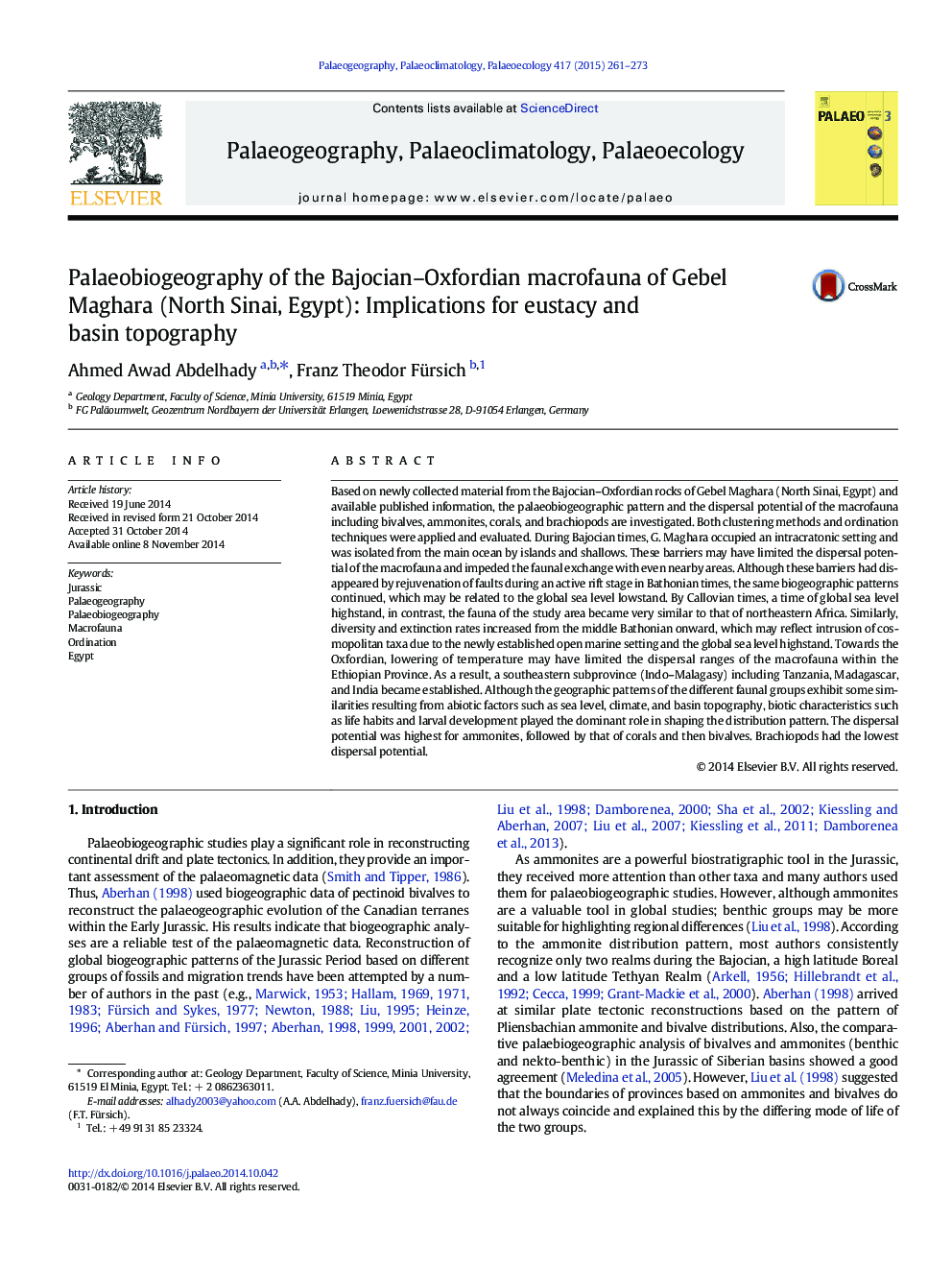| کد مقاله | کد نشریه | سال انتشار | مقاله انگلیسی | نسخه تمام متن |
|---|---|---|---|---|
| 6349871 | 1622173 | 2015 | 13 صفحه PDF | دانلود رایگان |

- The palaeobiogeography of the Middle Jurassic macrofauna of G. Maghara was reconstructed.
- Eustacy and basin topography have influenced the dispersal potential of the macrofauna.
- The macrofauna immigration was limited by the intracratonic setting and the sea level lowstand.
- Both diversity and extinction rate had increased due to intrusion of cosmopolitan taxa.
- Dispersal potential of the macrofauna was related to the life habit and the opportunistic strategies.
Based on newly collected material from the Bajocian-Oxfordian rocks of Gebel Maghara (North Sinai, Egypt) and available published information, the palaeobiogeographic pattern and the dispersal potential of the macrofauna including bivalves, ammonites, corals, and brachiopods are investigated. Both clustering methods and ordination techniques were applied and evaluated. During Bajocian times, G. Maghara occupied an intracratonic setting and was isolated from the main ocean by islands and shallows. These barriers may have limited the dispersal potential of the macrofauna and impeded the faunal exchange with even nearby areas. Although these barriers had disappeared by rejuvenation of faults during an active rift stage in Bathonian times, the same biogeographic patterns continued, which may be related to the global sea level lowstand. By Callovian times, a time of global sea level highstand, in contrast, the fauna of the study area became very similar to that of northeastern Africa. Similarly, diversity and extinction rates increased from the middle Bathonian onward, which may reflect intrusion of cosmopolitan taxa due to the newly established open marine setting and the global sea level highstand. Towards the Oxfordian, lowering of temperature may have limited the dispersal ranges of the macrofauna within the Ethiopian Province. As a result, a southeastern subprovince (Indo-Malagasy) including Tanzania, Madagascar, and India became established. Although the geographic patterns of the different faunal groups exhibit some similarities resulting from abiotic factors such as sea level, climate, and basin topography, biotic characteristics such as life habits and larval development played the dominant role in shaping the distribution pattern. The dispersal potential was highest for ammonites, followed by that of corals and then bivalves. Brachiopods had the lowest dispersal potential.
324
Journal: Palaeogeography, Palaeoclimatology, Palaeoecology - Volume 417, 1 January 2015, Pages 261-273